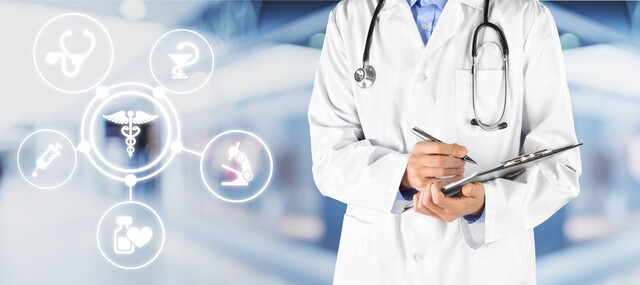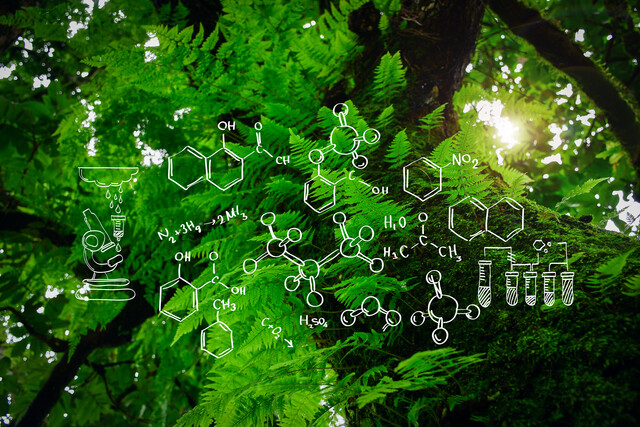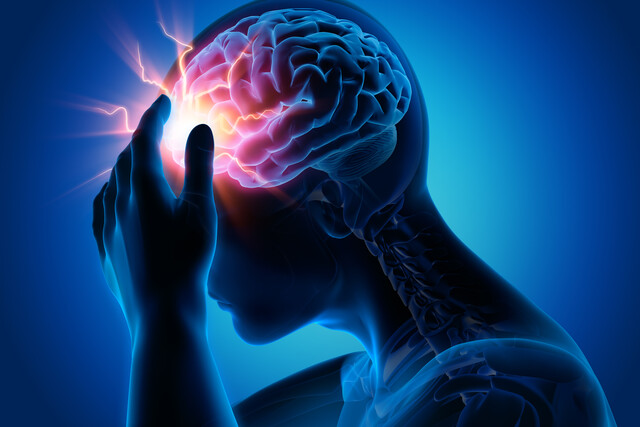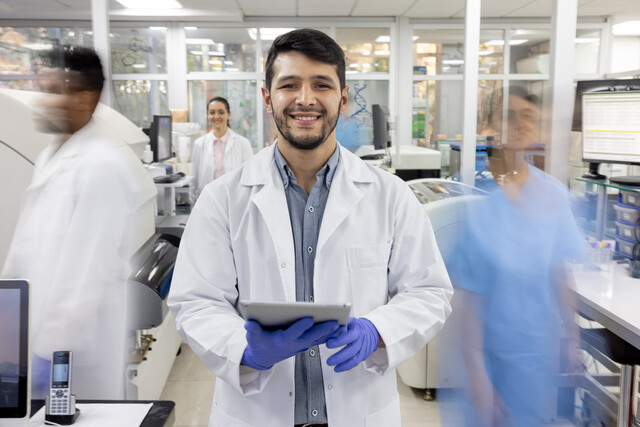Online Class: Microbiology Mastery — Unlocking the Foundations of Life

-
29Lessons
-
66Exams &
Assignments -
12Hours
average time -
1.2CEUs
Course Description
Unlock the Invisible Universe
Have you ever wondered about the unseen world that surrounds us-the microscopic organisms shaping our environment, our health, and even the future of science? Microbiology is more than just a branch of science; it's the key to understanding life on a profound level. This course is your gateway to that world. It's not just a class; it's an opportunity to see the universe differently, to equip yourself with the knowledge and skills that can change your career, your perspective, and perhaps even the world.
Welcome to the most engaging and comprehensive online microbiology course available today. Here, you won't just learn about bacteria, viruses, and fungi; you'll uncover their secrets, understand their power, and harness their potential. Whether you're an aspiring scientist, a healthcare professional, or a curious learner eager to understand the foundations of life, this course has been meticulously crafted to meet your needs and exceed your expectations.
Why Microbiology Matters-and Why This Course Stands Apart
Microbiology isn't just a subject; it's the cornerstone of groundbreaking advancements in medicine, biotechnology, and environmental science. It's the foundation of industries that are shaping the future. Yet, understanding microbiology isn't merely about facts and figures-it's about stories. The story of how tiny organisms drive massive global processes. The story of how breakthroughs in microbial research save lives. And most importantly, your story: how understanding microbiology will transform your life, career, and ambitions.
What makes this course unique? It's not just about delivering information; it's about creating transformation. From the first moment, you'll be captivated by a teaching approach that's dynamic, interactive, and deeply personal. You'll feel like the course was designed just for you-your goals, your curiosity, your success.
The Practical Knowledge You'll Gain
Imagine the confidence of being able to discuss microbiology's role in infectious diseases, environmental sustainability, and cutting-edge technology. Picture yourself making smarter decisions in your career, solving complex problems, or even pursuing new professional opportunities with the expertise you gain. This course will empower you with insights and skills you can immediately apply, whether in the lab, the clinic, or your everyday understanding of the world.
A Personal Invitation to Transform Your Future
This is more than a course; it's a journey of discovery and empowerment. By enrolling, you're taking the first step toward mastery, confidence, and a deeper connection to the world around you. Don't let this opportunity pass you by. Join us today, and unlock the door to the unseen universe that awaits. This is your moment-seize it.
Course Lessons
Lesson 1. Microbial Worlds: More than Meets the Eye
 Lesson 1 Video
Lesson 1 Video Review Practice Worksheet: Lesson-1-WordSearch-12355.pdf
Review Practice Worksheet: Lesson-1-WordSearch-12355.pdf Lesson discussions: Reasons for Taking this Course
Lesson discussions: Reasons for Taking this Course Complete: Assignment 1: Introduction to Microbiology Assignment
Complete: Assignment 1: Introduction to Microbiology Assignment Assessment: Quiz 1: Introduction to Microbiology Exam
Assessment: Quiz 1: Introduction to Microbiology Exam Assessment: Lesson 1 Review Exam
Assessment: Lesson 1 Review Exam
Lesson 2. Microbiology Essentials
 Lesson 2 Video
Lesson 2 Video Review Practice Worksheet: Lesson-2-WorkSheet-12356.pdf
Review Practice Worksheet: Lesson-2-WorkSheet-12356.pdf Complete: Lesson 2 Activity
Complete: Lesson 2 Activity Assessment: Quiz 2: Microbiology Terms Exam
Assessment: Quiz 2: Microbiology Terms Exam Assessment: Lesson 2 Review Exam
Assessment: Lesson 2 Review Exam
Lesson 3. Seeing the Unseen: A Journey into the Microbial World
 Lesson 3 Video
Lesson 3 Video Review Practice Worksheet: Lesson-3-WorkSheet-12357.pdf
Review Practice Worksheet: Lesson-3-WorkSheet-12357.pdf Assessment: Quiz 3: History of Microbiology Exam
Assessment: Quiz 3: History of Microbiology Exam Assessment: Lesson 3 Review Exam
Assessment: Lesson 3 Review Exam
Lesson 4. Delving Into the Invisible: A Closer Look at Microorganisms
 Lesson 4 Video
Lesson 4 Video Review Practice Worksheet: Lesson-4-Downloadable-12358.pdf
Review Practice Worksheet: Lesson-4-Downloadable-12358.pdf Assessment: Quiz 4: Composition Exam
Assessment: Quiz 4: Composition Exam Assessment: Lesson 4 Review Exam
Assessment: Lesson 4 Review Exam
Lesson 5. Bridging Chemistry and Microbiology: A Cellular Odyssey
 Lesson 5 Video
Lesson 5 Video Review Practice Worksheet: Lesson-5-HomeWork-12359.pdf
Review Practice Worksheet: Lesson-5-HomeWork-12359.pdf Complete: Lesson 5 Activity
Complete: Lesson 5 Activity Assessment: Quiz 5: The Chemical Basis of Microbiology Exam
Assessment: Quiz 5: The Chemical Basis of Microbiology Exam Assessment: Lesson 5 Review Exam
Assessment: Lesson 5 Review Exam
Lesson 6. Exploring the Foundation of Cellular Life: Prokaryotes vs. Eukaryotes
 Lesson 6 Video
Lesson 6 Video Review Practice Worksheet: Lesson-6-Downloadable-12360.pdf
Review Practice Worksheet: Lesson-6-Downloadable-12360.pdf Complete: Lesson 6 Activity
Complete: Lesson 6 Activity Assessment: Quiz 6: Prokaryotes and Eukaryotes
Assessment: Quiz 6: Prokaryotes and Eukaryotes Assessment: Lesson 6 Review Exam
Assessment: Lesson 6 Review Exam
Lesson 7. The Science of Microbial Metabolism
 Lesson 7 Video
Lesson 7 Video Review Practice Worksheet: Lesson-7-WorkSheet-26926.pdf
Review Practice Worksheet: Lesson-7-WorkSheet-26926.pdf Complete: Lesson 7 Activity
Complete: Lesson 7 Activity Assessment: Quiz 7: Microbial Metabolism Exam
Assessment: Quiz 7: Microbial Metabolism Exam Assessment: Lesson 7 Review Exam
Assessment: Lesson 7 Review Exam
Lesson 8. Microbes Unleashed: Understanding Their Growth and Impact
 Lesson 8 Video
Lesson 8 Video Review Practice Worksheet: Lesson-8-Downloadable-26928.pdf
Review Practice Worksheet: Lesson-8-Downloadable-26928.pdf Assessment: Quiz 8: Microbial Cultivation and Growth Exam
Assessment: Quiz 8: Microbial Cultivation and Growth Exam Assessment: Lesson 8 Review Exam
Assessment: Lesson 8 Review Exam
Lesson 9. Unraveling the Secrets of Microbial DNA: A Journey Through Genetic Machinery
 Lesson 9 Video
Lesson 9 Video Review Practice Worksheet: Lesson-9-Downloadable-26929.pdf
Review Practice Worksheet: Lesson-9-Downloadable-26929.pdf Assessment: Quiz 9: Microbial Genetics Exam
Assessment: Quiz 9: Microbial Genetics Exam Assessment: Lesson 9 Review Exam
Assessment: Lesson 9 Review Exam
Lesson 10. The Double Helix and Beyond: Unraveling the Mysteries of DNA and Protein Synthesis
 Lesson 10 Video
Lesson 10 Video Review Practice Worksheet: Lesson-10-WorkSheet-26930.pdf
Review Practice Worksheet: Lesson-10-WorkSheet-26930.pdf Assessment: Quiz 10: DNA and Gene Expression Exam
Assessment: Quiz 10: DNA and Gene Expression Exam Assessment: Lesson 10 Review Exam
Assessment: Lesson 10 Review Exam
Lesson 11. The World of Spiral Bacterial Forms
 Lesson 11 Video
Lesson 11 Video Review Practice Worksheet: Lesson-11-Activity-26931.pdf
Review Practice Worksheet: Lesson-11-Activity-26931.pdf Lesson discussions: Microbes
Lesson discussions: Microbes Complete: Lesson 11 Activity
Complete: Lesson 11 Activity Assessment: Quiz 11: The Bacteria Exam
Assessment: Quiz 11: The Bacteria Exam Assessment: Lesson 11 Review Exam
Assessment: Lesson 11 Review Exam
Lesson 12. Viral Diversity Uncovered: From Shapes to Strategies
 Lesson 12 Video
Lesson 12 Video Review Practice Worksheet: Lesson-12-Activity-26932.pdf
Review Practice Worksheet: Lesson-12-Activity-26932.pdf Complete: Lesson 12 Activity
Complete: Lesson 12 Activity Assessment: Quiz 12: The Viruses
Assessment: Quiz 12: The Viruses Assessment: Lesson 12 Review Exam
Assessment: Lesson 12 Review Exam
Lesson 13. Fungi: Nature's Hidden Powerhouses
 Lesson 13 Video
Lesson 13 Video Review Practice Worksheet: Lesson-13-Downloadable-26933.pdf
Review Practice Worksheet: Lesson-13-Downloadable-26933.pdf Assessment: Quiz 13: The Fungi Exam
Assessment: Quiz 13: The Fungi Exam Assessment: Lesson 13 Review Exam
Assessment: Lesson 13 Review Exam
Lesson 14. The Hidden Powerhouses of Our Planet: Algae Unveiled
 Lesson 14 Video
Lesson 14 Video Review Practice Worksheet: Lesson-14-StudyGuide-26934.pdf
Review Practice Worksheet: Lesson-14-StudyGuide-26934.pdf Assessment: Quiz 14: The Unicellular Algae Exam
Assessment: Quiz 14: The Unicellular Algae Exam Assessment: Lesson 14 Review Exam
Assessment: Lesson 14 Review Exam
Lesson 15. Protozoan Adaptation and Survival Strategies
 Lesson 15 Video
Lesson 15 Video Review Practice Worksheet: Lesson-15-Activity-26935.pdf
Review Practice Worksheet: Lesson-15-Activity-26935.pdf Assessment: Quiz 15: The Protozea Exam
Assessment: Quiz 15: The Protozea Exam Assessment: Lesson 15 Review Exam
Assessment: Lesson 15 Review Exam
Lesson 16. Infection vs. Disease: A Crucial Distinction
 Lesson 16 Video
Lesson 16 Video Review Practice Worksheet: Lesson-16-HomeWork-26936.pdf
Review Practice Worksheet: Lesson-16-HomeWork-26936.pdf Assessment: Quiz 16: The Host-Parasite Relationship Exam
Assessment: Quiz 16: The Host-Parasite Relationship Exam Assessment: Lesson 16 Review Exam
Assessment: Lesson 16 Review Exam
Lesson 17. The Intricate Dance: Pathogens and Human Defenses
 Lesson 17 Video
Lesson 17 Video Review Practice Worksheet: Lesson-17-StudyGuide-26937.pdf
Review Practice Worksheet: Lesson-17-StudyGuide-26937.pdf Assessment: Quiz 17: The Development of Infectious Disease Exam
Assessment: Quiz 17: The Development of Infectious Disease Exam Assessment: Lesson 17 Review Exam
Assessment: Lesson 17 Review Exam
Lesson 18. Understanding the Body's Defense Mechanisms
 Lesson 18 Video
Lesson 18 Video Review Practice Worksheet: Lesson-18-Activity-26938.pdf
Review Practice Worksheet: Lesson-18-Activity-26938.pdf Assessment: Quiz 18: Nonspecific Body Defense Exam
Assessment: Quiz 18: Nonspecific Body Defense Exam Assessment: Lesson 18 Review Exam
Assessment: Lesson 18 Review Exam
Lesson 19. The Science Behind Skin Disorders and Their Impact
 Lesson 19 Video
Lesson 19 Video Review Practice Worksheet: Lesson-19-HomeWork-26939.pdf
Review Practice Worksheet: Lesson-19-HomeWork-26939.pdf Assessment: Quiz 19: The Skin Exam
Assessment: Quiz 19: The Skin Exam Assessment: Lesson 19 Review Exam
Assessment: Lesson 19 Review Exam
Lesson 20. Peer Through the Window: Understanding the Eye's Layers and Fluids
 Lesson 20 Video
Lesson 20 Video Review Practice Worksheet: Lesson-20-Downloadable-26940.pdf
Review Practice Worksheet: Lesson-20-Downloadable-26940.pdf Assessment: Quiz 21: The Eyes Exam
Assessment: Quiz 21: The Eyes Exam Assessment: Lesson 20 Review Exam
Assessment: Lesson 20 Review Exam
Lesson 21. Blood and Defense: The Art of Circulating Life
 Lesson 21 Video
Lesson 21 Video Review Practice Worksheet: Lesson-21-Downloadable-26941.pdf
Review Practice Worksheet: Lesson-21-Downloadable-26941.pdf Lesson discussions: Human Systems
Lesson discussions: Human Systems Assessment: Quiz 21: The Cardiovascular and Lymphatic Systems Exam
Assessment: Quiz 21: The Cardiovascular and Lymphatic Systems Exam Assessment: Lesson 21 Review Exam
Assessment: Lesson 21 Review Exam
Lesson 22. Exploring the Respiratory System: Structure, Function, and Challenges
 Lesson 22 Video
Lesson 22 Video Review Practice Worksheet: Lesson-22-Downloadable-26942.pdf
Review Practice Worksheet: Lesson-22-Downloadable-26942.pdf Assessment: Quiz 22: The Respiratory System Exam
Assessment: Quiz 22: The Respiratory System Exam Assessment: Lesson 22 Review Exam
Assessment: Lesson 22 Review Exam
Lesson 23. Unraveling the Mysteries of Neurodegeneration: A Comprehensive Overview
 Lesson 23 Video
Lesson 23 Video Review Practice Worksheet: Lesson-23-StudyGuide-26943.pdf
Review Practice Worksheet: Lesson-23-StudyGuide-26943.pdf Assessment: Quiz 23: The Nervous System
Assessment: Quiz 23: The Nervous System Assessment: Lesson 23 Review Exam
Assessment: Lesson 23 Review Exam
Lesson 24. From Mouth to Anus: A Digestive Journey
 Lesson 24 Video
Lesson 24 Video Review Practice Worksheet: Lesson-24-Downloadable-26944.pdf
Review Practice Worksheet: Lesson-24-Downloadable-26944.pdf Assessment: Quiz 24: The Digestive System Exam
Assessment: Quiz 24: The Digestive System Exam Assessment: Lesson 24 Review Exam
Assessment: Lesson 24 Review Exam
Lesson 25. Essential Insights into Reproductive Systems
 Lesson 25 Video
Lesson 25 Video Review Practice Worksheet: Lesson-25-Activity-26945.pdf
Review Practice Worksheet: Lesson-25-Activity-26945.pdf Assessment: Quiz 25: The Reproductive System Exam
Assessment: Quiz 25: The Reproductive System Exam Assessment: Lesson 25 Review Exam
Assessment: Lesson 25 Review Exam
Lesson 26. The Immune System Unveiled
 Lesson 26 Video
Lesson 26 Video Review Practice Worksheet: Lesson-26-Downloadable-26946.pdf
Review Practice Worksheet: Lesson-26-Downloadable-26946.pdf Assessment: Quiz 26: The Immune System Exam
Assessment: Quiz 26: The Immune System Exam Assessment: Lesson 26 Review Exam
Assessment: Lesson 26 Review Exam
Lesson 27. Nutrient Cycles: Foundations of Terrestrial Life
 Lesson 27 Video
Lesson 27 Video Review Practice Worksheet: Lesson-27-WorkSheet-26947.pdf
Review Practice Worksheet: Lesson-27-WorkSheet-26947.pdf Assessment: Quiz 27: Soil Microbiology Exam
Assessment: Quiz 27: Soil Microbiology Exam Assessment: Lesson 27 Review Exam
Assessment: Lesson 27 Review Exam
Lesson 28. Microscopic Ocean Giants: Oxygen Innovators and Ecosystem Engineers
 Lesson 28 Video
Lesson 28 Video Review Practice Worksheet: Lesson-28-StudyGuide-26948.pdf
Review Practice Worksheet: Lesson-28-StudyGuide-26948.pdf Lesson discussions: Hydrothermal Vents
Lesson discussions: Hydrothermal Vents Assessment: Quiz 28: Aquatic Microbiology Exam
Assessment: Quiz 28: Aquatic Microbiology Exam Assessment: Lesson 28 Review Exam
Assessment: Lesson 28 Review Exam
Lesson 29. Microbiology: Harnessing the Invisible Force
 Lesson 29 Video
Lesson 29 Video Review Practice Worksheet: Lesson-29-WorkSheet-26949.pdf
Review Practice Worksheet: Lesson-29-WorkSheet-26949.pdf Lesson discussions: Course Completion Poll: Your Thoughts; Program Evaluation Follow-up Survey (End of Course); Course Comments; Course Comments
Lesson discussions: Course Completion Poll: Your Thoughts; Program Evaluation Follow-up Survey (End of Course); Course Comments; Course Comments Assessment: Quiz 29: Microbiology in the Environment and Us Exam
Assessment: Quiz 29: Microbiology in the Environment and Us Exam Assessment: The Final Exam
Assessment: The Final Exam Assessment: Lesson 29 Review Exam
Assessment: Lesson 29 Review Exam
Learning Outcomes
- Define key characteristics and roles of at least three types of microorganisms, including bacteria, viruses, and fungi, in various ecological and biological processes.
- Identify at least two significant contributions of microbiology to human health and environmental sustainability, providing specific examples, such as antibiotic production and bioremediation.
- Describe the role of bacteriophages in combating antibiotic-resistant bacteria by explaining the potential of phage therapy as a targeted treatment method.
- Identify the specific abiotic adaptations that enable acidophiles to thrive in extreme environments by classifying examples from different ecosystems.
- Analyze the evolution of microbiological techniques from early magnification to modern innovations and apply these learnings to solve contemporary scientific challenges.
- Define key historical figures' contributions to the development of microscopy in microbiology and explain their impact on modern scientific practices.
- Describe the role of microorganisms in nutrient cycling and ecosystem functions, illustrating their impact with specific examples like nitrogen-fixing bacteria and phytoplankton.
- Identify and classify different types of microorganisms using genetic data, emphasizing the advances brought by genetic sequencing in modern taxonomy.
- Identify and describe the roles of covalent, ionic, and polar bonds in the structure and function of organic compounds relevant to microbial life.
- Recognize and explain the four tenets of cell theory as fundamental principles in biological sciences.
- Describe the structural differences between prokaryotic and eukaryotic cells and identify examples of organisms from each category.
- Explain the ecological roles of bacteria and archaea in nutrient cycling and environmental adaptation, illustrating their impact on ecosystems.
- Identify the role of microbial metabolism in energy production and ecological adaptation by analyzing catabolic and anabolic pathways with at least 90% accuracy based on the provided lesson material.
- Demonstrate mastery of lesson content at levels of 70% or higher.
Additional Course Information

- Document Your Lifelong Learning Achievements
- Earn an Official Certificate Documenting Course Hours and CEUs
- Verify Your Certificate with a Unique Serial Number Online
- View and Share Your Certificate Online or Download/Print as PDF
- Display Your Certificate on Your Resume and Promote Your Achievements Using Social Media

Student Testimonials
- "I think my instructor did a wonderful job with this course. Her interaction and motivating comments helped me to complete this course. I plan to encourage others to take her course and I plan to enroll in another one." -- Andrew E.
- "This course has been very interesting. It's helped me to develop a much deeper understanding of things I was slightly familiar with and changed many misconceptions I had about biological processes and terminology." -- Dennis A.
- "Brilliant information, I have learnt so much and told to me in words I can understand and never felt out paced or over my head and my instructor was very patient with me initially while I learned how to upload my assignment. Thanks again." -- Gretta F.










